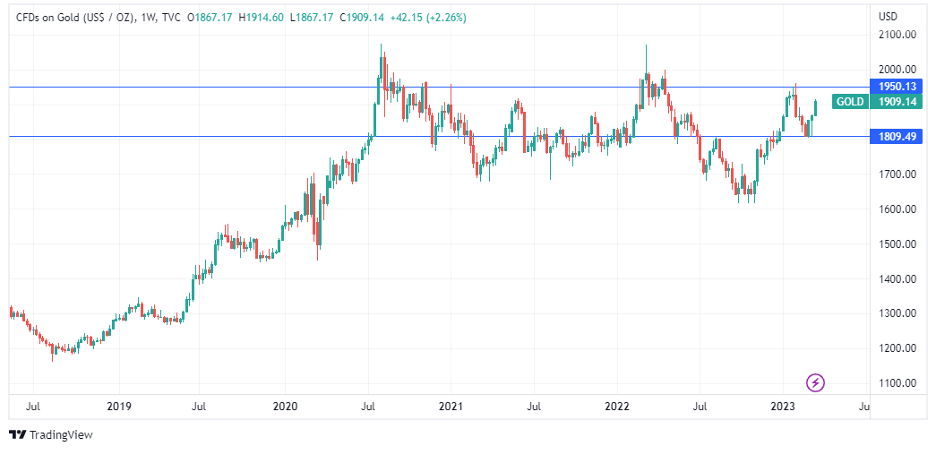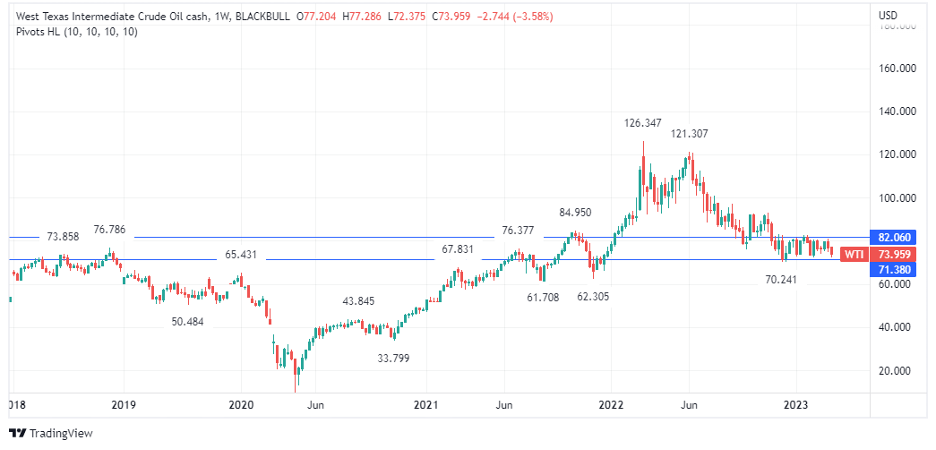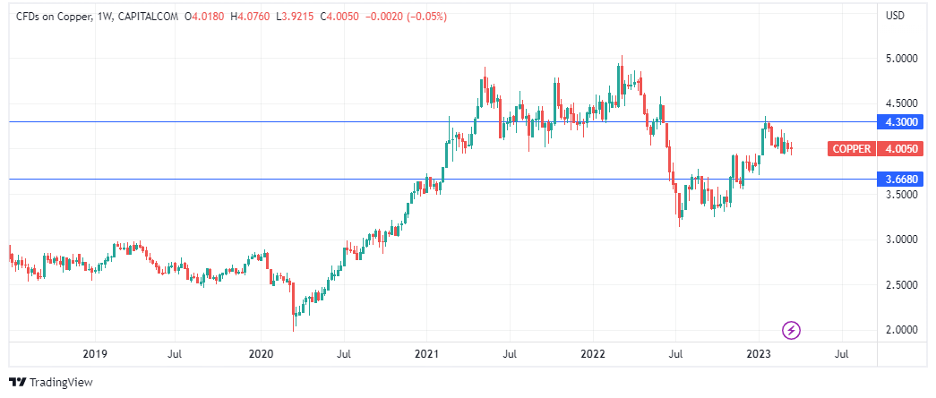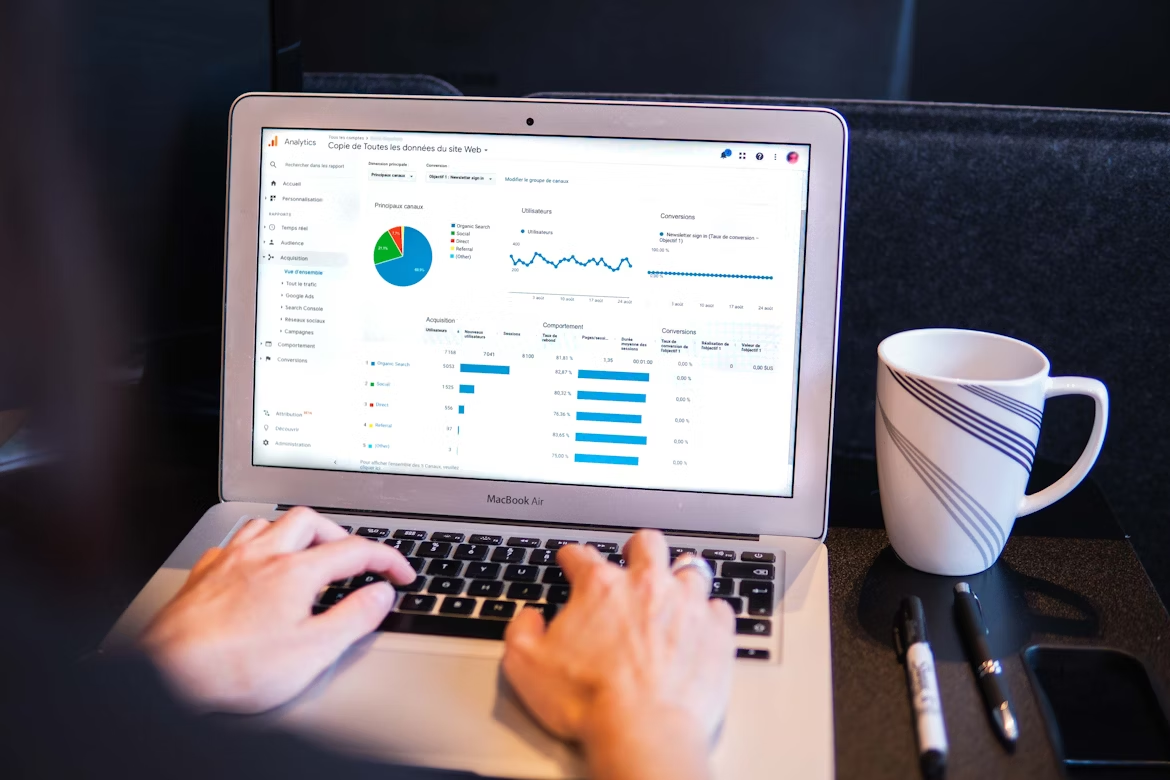Commodity price-tags have been historically challenging to predict as they are affected by varying drivers, such as geopolitical events and omnipresent global economic trends. The hawkish approach adopted by major central banks to tackle inflation, including the Federal Reserve, the European Central Bank and previously-dovish banks predominantly in Asia, paired with growing uncertainty and conflicting interests, commodity prices were volatile in 2023.
Among the most attractive commodities in recent times were oil, gold, copper, coffee & lithium. Looking into current trends & future projections, prices of some commodities may grow in the short run, while others are predicted to stabilize after sharp price movements.
Gold: The Rise of the Bullion
During times of economic and political uncertainty, gold is regarded as a safe-haven asset, but this was not the case last year. After being battered throughout 2022 amid high inflation and exacerbating geopolitical tensions, January marked a champion of a month for the bullion, as the dwindling US dollar significantly contributed to gold's 6.1% rise in the month.
A sizeable drop in U.S. Treasury yields of 37 bps (basis points) further-reduced the attractiveness of the greenback; inversely boosting the demand for gold and its prices to levels unseen since the market wounds caused by the Russia-Ukraine were in its early stages.
February did not follow suit of the last month, and the precious metal gave back most of its gains. Following the U.S. Federal Reserve interest rate hike of 25bps after its January 31 to February 1 meeting, hand-in-hand with strong U.S. economic data and a strengthening dollar, gold prices dropped 5.2% in February to a low of $1,825 per ounce.
In March, gold prices have surged after the infamous collapse of startup-lender Silicon Valley Bank (SVB) and Signature bank, which created waves of uncertainty in the banking and finance sectors. Yet, it is not certain whether gold will hold on to its current price-tag as the contrasting effects of high inflation and central bank interest rate hikes continue to cause imbalances between the demand and supply forces for gold.

Gold prices have been quite volatile in 2023, with a current support level marking its ground by $1,809 and a resistance level hovering by the $1,950 mark. According to TradingEconomics, gold prices are expected to trade at $1,832 by the end of the first quarter of 2023, but much will depend on the next moves of central banks, as they may pause their tightening campaigns to avoid further risks in the financial system after the SVB conundrum shook up the markets.
Oil: From Stability to Growth
In the first months of 2023, oil prices remained stable and downward-trending, which may implicate less attractiveness, but the contrary is truer. Geopolitical unrest caused by Russia’s invasion of Ukraine remain present, and this typically boosts oil prices given diminished oil supplies and inventories following global sanctions on the energy-rich Russia.
Yet, rising exports from Russia and growing expectations that oil demand in China will rise, have also played a role in balancing out the demand for oil, which witnessed a 2% drop in prices in January. In February, oil prices plummeted to three-week lows after strong employment figures from the United States swayed investors away from the popular energy commodity.
Chinese oil imports account for nearly half of global oil imports, and the Organization of the Petroleum Exporting Countries (OPEC) increased its forecast for Chinese oil demand growth in 2023 after recently lifting its regional COVID-19 restrictions. Hence, the price of oil is expected to trade by $79.47 per barrel by the end of the first quarter of 2023, according to TradingEconomics, but there are other factors which may impede oil’s growth.

Looking at the price movements of the West Texas Intermediate (WTI) oil benchmark, it’s moving mostly between $71.3 and $82.06, which mark the short-term support and resistance levels, respectively. Investors are eagerly awaiting the IEA’s monthly report and official data from the United States with regards to crude inventories to set the tone for the next months.
Copper is Gaining Ground
Copper is a highly-demanded commodity as it is utilized in many sectors, such as construction, electronics, electric vehicles and renewable energy technologies. Macroeconomic pressures and growing recessionary concerns have weighed down on copper in 2022, yet the metal impressively recovered in the closing months of 2022 and the start of the new year.
A weaker dollar greenback and expectations that China will lift its restrictions boosted the price of copper in January, but has slashed some of it gains in February after bolstered U.S. economic figures and another Fed rate hike weighed down on copper demand.
The metal remains in shortage, and such supply constrictions are expected to overwhelm international markets in 2023, amid increased demand pressures. However, a short-term economic downturn may reduce global demand for copper.

In a technical perspective, the TradingView-powered chart presents the surge of copper prices in late 2022 and the start of 2023, but were recently slashed. The volatile price movements of copper have given birth to another support level by $4.005, above the lower $3.668 level, and the resistance level hovers near $4.30. TradingEconomics expects the price will consolidate by $3.7 towards the end of 2023, but much will depend on the upcoming market revelations.
Coffee – Hot or Cold?
Coffee needs no introduction. It is among the most popular beverages consumed around the world, and it is widely expected to enjoy continued prosperity amid rising popularity and shifting weather patterns across the globe’s regions which may constrict coffee production; in-turn increasing its price-tag and value.
In January, coffee witnessed a behemoth of a surge due to elevated costs attached to producing and selling the fan-favorite morning brew. Also, strong coffee trading in the United Kingdom and the United States have pushed coffee prices upwards.
The following month, coffee prices plummeted as market conditions seem to have been stabilized as overly optimistic production estimates and weaker economic conditions have weighed down on the commodity. Exports from Colombia, the world’s second-largest producer of arabica coffee beans, have dropped 19% year-on-year in January to 835,000 bags. Supply tightness from the world’s top coffee exporter Brazil is expected to continue to pressure prices.

The price of the Coffee Cash Contract, also known as US Coffee C Futures, is currently valued at $177.54 at the time of writing this article, and is trading between a support level by $146 and a resistance mark by $193. The future outlook for coffee will depend on the production levels of major oil exporters, including Brazil, Vietnam and Colombia, the economic conditions of major coffee importers such as the United States, Germany and France.
Lithium May be The Real Winner of 2023
Lithium is the gold of the modern age. Its most notable utility in being a key competent in the batteries of electric vehicles and renewable energy storages have rocketed its demand for in the past several years. Investors can trade lithium-focused stocks and instruments, such as those entrenched within lithium mining and battery production, and this sector has quite the large potential for growth.
As more electric vehicles are being produced by the day, this commodity may continue to bask in glory. However, the theme of conflicting forces remains apparent. There are concerns of oversupply of lithium, rather than deepened supply shortages attached to other vital components like semiconductor chips, which may hurt the prices of lithium in the long term.
8.5 million tons of lithium were found in Iran, which accounts to 10% of the global reserves, and lithium carbonate production in Australia is also expected to significantly rise in 2023. As demand for lithium-intensive products remains on the rise, lithium may remain somewhat stable in 2023 and this presents an attractive opportunity for investors and traders to capitalize on somewhat-stable volatility.
Prepared by Financial Analyst of Golden Brokers ARIFF AZRAEI BIN MOHAMMED KAMAL





.jpeg)









